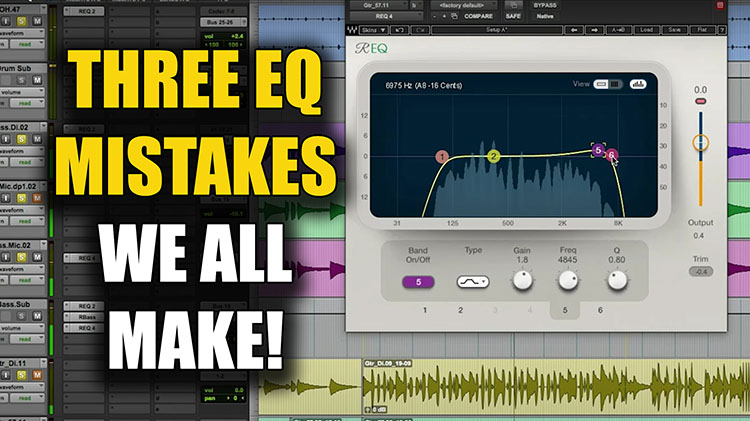Today we are sharing 3 common EQ mistakes, and how to avoid them! These might seem quite simple, but they are the fundamentals that I apply to every single mix.
Click here to download the cheat sheet so you can always have these tips available!
1. Overusing Sweep EQ
I realize that as a beginner you are encouraged by everyone to use sweep EQs, but they are not always beneficial for your mix. I actually can’t remember the last time I used a sweep EQ! If I take any EQ band and boost it to 5, 10, 15, 20 dB, no matter how narrow it is, I don’t have to move something very far before it is completely and utterly obnoxious. If you are sweeping to find bad things, you will always find bad things. After applying that sweep EQ, the track will likely sound flat and lifeless.
Instead, trust yourself and your ears! When you hear something horrible, that is when you look for where it is and fix it. If you are not hearing anything offensive, don’t go looking for things that are offensive. Trust yourself and make decisions based on what you hear.
2. Not Using High and Low Passing
Any tracks you mix are going to have buildup in certain frequencies, and in that low end – from about 20 to 200 Hertz – it can be an absolute mess. This is where you go in and start getting creative! If you are listening to an instrument and you are not hearing a reason for it to have excessive low end or excessive high end, get rid of it and you will create some real clarity. There is a lot of confusion about this, but high passing and low passing and gentle EQ moves are very useful, and are such powerful tools when it comes to shaping your low and high end.
3. Applying EQ to Solve Problems That Aren’t Persistent in the Mix
If we EQ to fix problems that are only present in certain areas, the part can start to sound really narrow and thin. For example, on a chord, it might seem like good idea to take out certain frequencies, but if the same guitar player plays an arpeggio immediately after that and concentrates on high strings, suddenly all the low end or low mids that were reinforcing that beautiful high line are taken away. In cases like this, you have to be selective of where you apply the EQ, and don’t be afraid to automate so that the EQ is applied only where it is truly needed!
Check out our EQ cheat sheet for an easy reference guide to what frequencies shape and control all the most common instruments.
Watch the video below to learn more about these common EQ mistakes!
